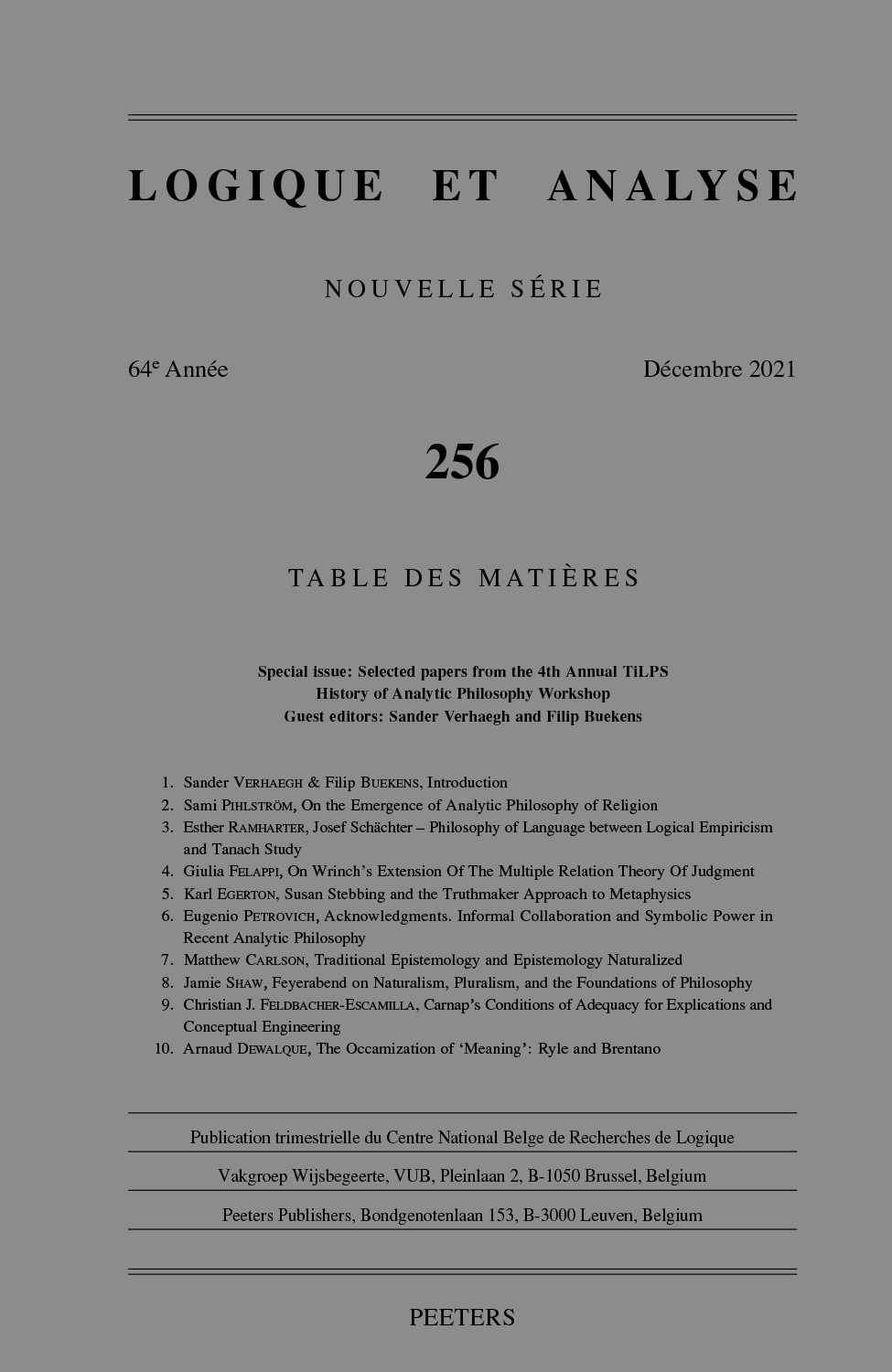 previous article in this issue previous article in this issue | next article in this issue  |

|
Document Details : Title: Lesniewski, Tarski and the Geometry of Solids Author(s): CLAY, Robert E. Journal: Logique et Analyse Volume: 254 Date: 2021 Pages: 131-148 DOI: 10.2143/LEA.254.0.3289654 Abstract : In this paper we demonstrate the extent to which Tarski’s Geometry of Solids can be formalized in Lesniewski’s system of Mereology and how, within this formalization, it becomes possible to construct the Geometry of Solids with a simplicity not found in Tarski’s work. Firstly, we directly translate all of Tarski’s definitions and Mereological postulates through Definition 5 into formal Mereology. Secondly, we translate Tarski’s Definitions 6 through 9. These are less direct and involve choices of interpretation. In the process we clarify the meaning of the collective class 'Kl' with a simple one-dimensional example. Thirdly, we examine Tarski’s Postulate 1 in which he creates some confusion when he cites Mario Pieri’s axioms in a footnote and opens the possibility that a point is both an individual object (ala Pieri) and a distributive class of spheres (ala Lesniewski/Tarski). So a sphere is a distributive class (set) of points (ala Pieri) and an individual object (name) (ala Lesniewski/Tarski). Finally, we steer clear of Tarski’s melding of two systems by constructing the Geometry of Solids, including the axiomatization of Euclidean space, in the base semantic category. We give the formalization of Hilbert’s Axioms, except for the Axioms of Continuity, as well as definitions for Hilbert’s undefined terms. This yields a system based on primitives of the term ‘sphere’ and the ternary relation ‘equidistant’ that is an interpretation of Lesniewski’s Mereology. |
|
